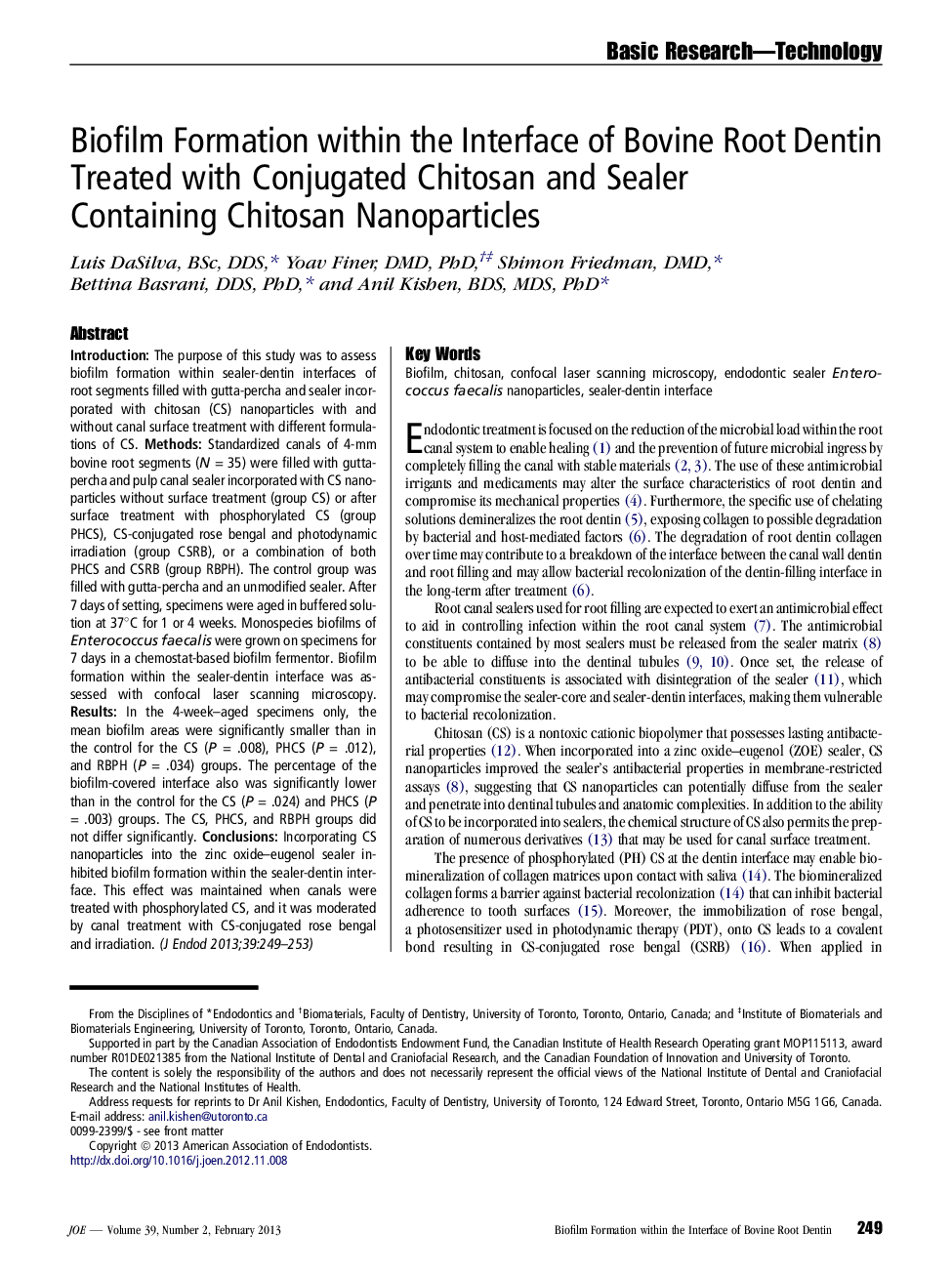| کد مقاله | کد نشریه | سال انتشار | مقاله انگلیسی | نسخه تمام متن |
|---|---|---|---|---|
| 3147004 | 1197335 | 2013 | 5 صفحه PDF | دانلود رایگان |

IntroductionThe purpose of this study was to assess biofilm formation within sealer-dentin interfaces of root segments filled with gutta-percha and sealer incorporated with chitosan (CS) nanoparticles with and without canal surface treatment with different formulations of CS.MethodsStandardized canals of 4-mm bovine root segments (N = 35) were filled with gutta-percha and pulp canal sealer incorporated with CS nanoparticles without surface treatment (group CS) or after surface treatment with phosphorylated CS (group PHCS), CS-conjugated rose bengal and photodynamic irradiation (group CSRB), or a combination of both PHCS and CSRB (group RBPH). The control group was filled with gutta-percha and an unmodified sealer. After 7 days of setting, specimens were aged in buffered solution at 37°C for 1 or 4 weeks. Monospecies biofilms of Enterococcus faecalis were grown on specimens for 7 days in a chemostat-based biofilm fermentor. Biofilm formation within the sealer-dentin interface was assessed with confocal laser scanning microscopy.ResultsIn the 4-week–aged specimens only, the mean biofilm areas were significantly smaller than in the control for the CS (P = .008), PHCS (P = .012), and RBPH (P = .034) groups. The percentage of the biofilm-covered interface also was significantly lower than in the control for the CS (P = .024) and PHCS (P = .003) groups. The CS, PHCS, and RBPH groups did not differ significantly.ConclusionsIncorporating CS nanoparticles into the zinc oxide–eugenol sealer inhibited biofilm formation within the sealer-dentin interface. This effect was maintained when canals were treated with phosphorylated CS, and it was moderated by canal treatment with CS-conjugated rose bengal and irradiation.
Journal: Journal of Endodontics - Volume 39, Issue 2, February 2013, Pages 249–253